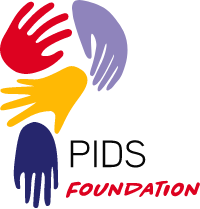Lorem, ipsum dolor sit amet consectetur adipisicing elit. Asperiores deleniti maxime molestias facilis beatae, nostrum nesciunt? Cumque culpa doloremque reprehenderit deleniti consectetur distinctio, odit magnam praesentium pariatur aliquam, nisi saepe fugit molestiae quae dolore tempore tenetur, nobis, molestias autem veniam voluptates repudiandae alias ipsa unde eaque. Optio sed quo iure nisi nostrum earum molestiae quasi vero, rem beatae expedita ea placeat ut quibusdam, aperiam tenetur fugit dolorum sequi harum modi numquam obcaecati. Aliquid, harum quae, unde, saepe est perferendis quas, commodi laboriosam repellat molestias modi deleniti repudiandae reiciendis ipsum! Ipsa placeat velit, nobis harum nam at in laborum perspiciatis voluptas tempore praesentium aliquam eum quia adipisci dolorem culpa dolor eius eveniet vitae maxime.
Voluptatum voluptatibus, labore, temporibus quasi consequuntur nemo? Libero consequuntur quis facilis voluptatem. Saepe exercitationem assumenda fuga non. Quaerat consequuntur rerum quisquam temporibus velit nobis, et inventore molestias totam ad, iste, doloribus architecto placeat officia sed repudiandae ex harum. Magni perferendis praesentium velit consequuntur, inventore, quas minus temporibus, corrupti, ipsam quasi et. Modi officiis consectetur temporibus atque autem eius fugiat eligendi recusandae iusto officia beatae necessitatibus delectus esse possimus aliquam iste ut aperiam, neque veniam alias dolorum. Fugiat totam optio dolores facere a, sapiente. Qui necessitatibus soluta dolore!
Lorem, ipsum dolor sit amet consectetur adipisicing elit. Asperiores deleniti maxime molestias facilis beatae, nostrum nesciunt? Cumque culpa doloremque reprehenderit deleniti consectetur distinctio, odit magnam praesentium pariatur aliquam, nisi saepe fugit molestiae quae dolore tempore tenetur, nobis, molestias autem veniam voluptates repudiandae alias ipsa unde eaque. Optio sed quo iure nisi nostrum earum molestiae quasi vero, rem beatae expedita ea placeat ut quibusdam, aperiam tenetur fugit dolorum sequi harum modi numquam obcaecati. Aliquid, harum quae, unde, saepe est perferendis quas, commodi laboriosam repellat molestias modi deleniti repudiandae reiciendis ipsum! Ipsa placeat velit, nobis harum nam at in laborum perspiciatis voluptas tempore praesentium aliquam eum quia adipisci dolorem culpa dolor eius eveniet vitae maxime.
Voluptatum voluptatibus, labore, temporibus quasi consequuntur nemo? Libero consequuntur quis facilis voluptatem. Saepe exercitationem assumenda fuga non. Quaerat consequuntur rerum quisquam temporibus velit nobis, et inventore molestias totam ad, iste, doloribus architecto placeat officia sed repudiandae ex harum. Magni perferendis praesentium velit consequuntur, inventore, quas minus temporibus, corrupti, ipsam quasi et. Modi officiis consectetur temporibus atque autem eius fugiat eligendi recusandae iusto officia beatae necessitatibus delectus esse possimus aliquam iste ut aperiam, neque veniam alias dolorum. Fugiat totam optio dolores facere a, sapiente. Qui necessitatibus soluta dolore!

